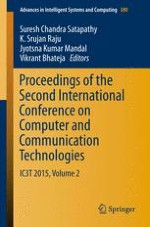The book is about all aspects of computing, communication, general sciences and educational research covered at the Second International Conference on Computer & Communication Technologies held during 24-26 July 2015 at Hyderabad. It hosted by CMR Technical Campus in association with Division – V (Education & Research) CSI, India. After a rigorous review only quality papers are selected and included in this book. The entire book is divided into three volumes. Three volumes cover a variety of topics which include medical imaging, networks, data mining, intelligent computing, software design, image processing, mobile computing, digital signals and speech processing, video surveillance and processing, web mining, wireless sensor networks, circuit analysis, fuzzy systems, antenna and communication systems, biomedical signal processing and applications, cloud computing, embedded systems applications and cyber security and digital forensic. The readers of these volumes will be highly benefited from the technical contents of the topics.
